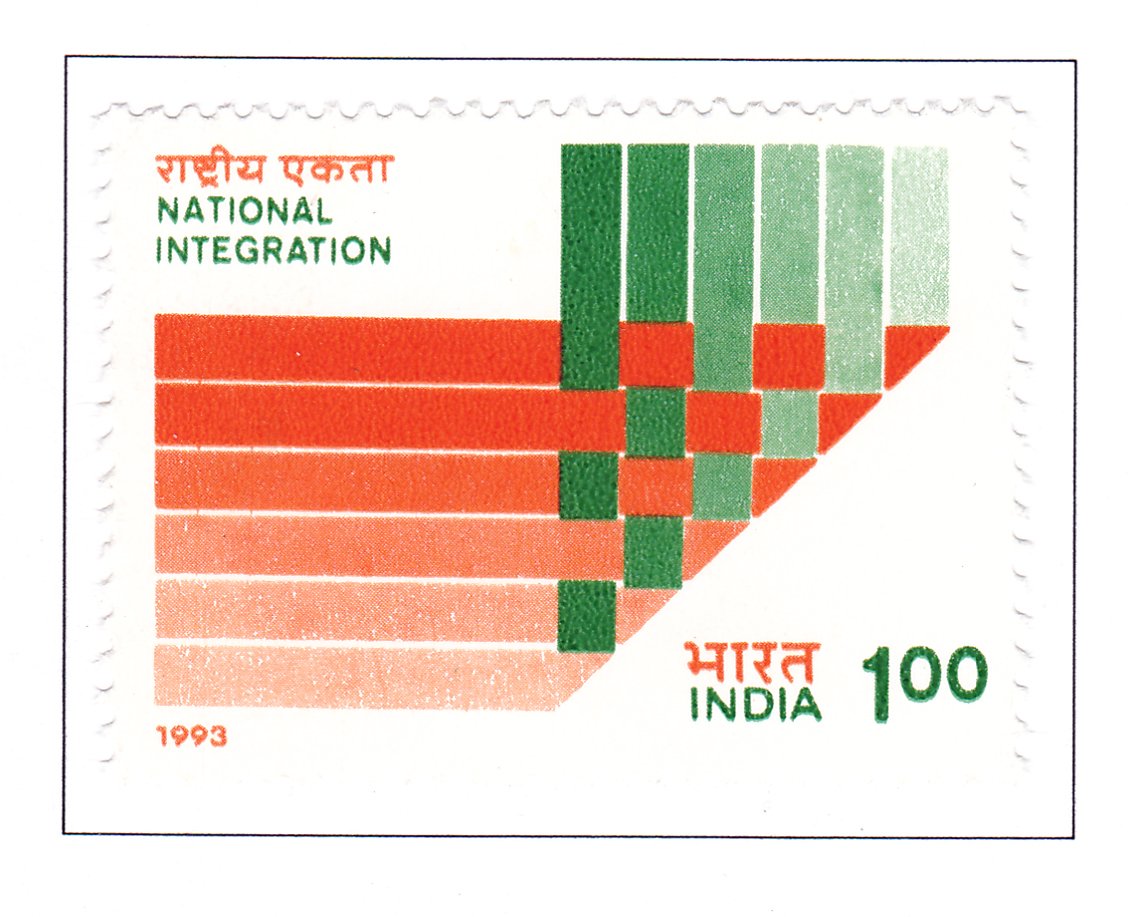National Integration Campaign

Technical Data
| Date of Issue | August 19, 1993 |
|---|---|
| Denomination | Rs. 1 |
| Quantity | 1,000,000 |
| Perforation | comb 13½ x 13 |
| Printer | Security Printing Press, Nashik |
| Watermark | No Watermark |
| Colors | Multicolor |
| Catalog Codes |
Michel IN 1395 Stamp Number IN 1466 Yvert et Tellier IN 1193 Stanley Gibbons IN 1545 |
| Themes | Seals(Emblems) |
Table of Contents
Our Journey Towards Purna Swaraj
Historical Context
- Freedom Struggle and State Power: Our journey began with the struggle for freedom, culminating in the departure of foreign rulers. However, gaining State power was just the beginning. Achieving “Purna Swaraj” (complete self-rule) required more than political control; it demanded the creation of a society that harmonized individual freedoms with the social objectives enshrined in our Constitution.
The Vision of Purna Swaraj
- Integration and Patriotism: Achieving Purna Swaraj involved integrating the diverse strands of our national fabric, fostering patriotism, and nurturing a common enthusiasm for the country’s all-round development. This integration was likened to a rivulet becoming a magnificent river as it is joined by tributaries, symbolizing the strength and richness derived from diversity.
Challenges and Misgivings
- Diverse Nation: Questions and doubts about India’s ability to mold itself into a nation-state were common, given its divisions by faith, race, caste, and other prejudices. However, these misgivings were repeatedly rebutted by leaders like Pandit Nehru, who emphasized the unity of India’s diverse culture as our common heritage.
National Integration
- Beyond Commonalities: While unity of language, religion, race, and culture can aid national integration, they are not essential. True national integration can be founded on geographical unity, shared heritage, common concerns for the present, and aspirations for the future. This integration fosters favorable socio-political and economic conditions, enabling growth and prosperity for all.
India’s Heritage and Global Role
- A Glorious Legacy: India’s heritage has become richer over the centuries by assimilating the best of different cultures. From Buddha’s teachings to Ashoka’s practices and Mahatma Gandhi’s emphasis on harmony, India has a precious legacy to uphold.
- Global Moral Force: In today’s world, India must revive its centuries-old culture of harmonizing diverse elements into a perfect symphony of national development, serving as a guiding moral force globally.
Philatelic Tribute
- Commemorative Stamps: Over the years, the Department of Posts has issued special and commemorative stamps depicting various aspects of our national heritage and culture.
- Design and Symbolism: The stamp issued today, designed by Shri C.R. Pakrashi, uses the colors of the national flag to represent the strength born from weaving different strands together. The First Day Cover features the National Integration logo, depicting stylized human elements superimposed on flower petals, creating a sense of rhythm and unity.
Design Credits
- Stamp: Shri C.R. Pakrashi
- First Day Cover: National Integration Logo provided by the Ministry of Home Affairs, Government of India.
- Cancellation: Smt. Alka Sharma, Department of Posts.
This philatelic issuance not only celebrates our national integration but also underscores the need for unity in diversity, a concept that has been central to India’s identity and vision.
